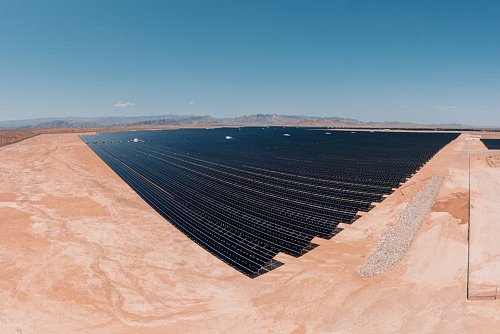A "Great Solar Wall" is Rising in China – It Could Power All of Beijing
A Massive Solar Park Will Cover Hundreds of Thousands of Hectares of China's Desert.

Will Cover the Capital's Energy Consumption
In the Kubuqi Desert in northwest China, construction is underway on a massive solar park. This ambitious project, which could reshape the future of renewable energy, is set to be completed by 2030 and will have a capacity of up to 100 gigawatts—enough to supply energy to Beijing.
Transforming China’s seventh-largest desert into an extensive photovoltaic power plant is currently one of the world's most extensive renewable energy projects. The initiative is being carried out by PowerChina Hubei Group, with construction having started in 2021.
This once-inhospitable area is gradually turning into a hub for solar power generation. Over the next five years, the solar park is expected to cover an area 400 kilometers long and 5 kilometers wide.
At present, 5.42 gigawatts of solar capacity have been installed in the desert—about one-twentieth of the planned goal. The region has immense solar potential, with approximately 3,100 hours of sunlight per year.
Will Support Water Retention in the Region
Beyond significantly contributing to Beijing’s energy supply—one of the most densely populated cities in the world with nearly 22 million residents—the installation will also bring additional environmental and economic benefits.
For instance, it will help combat desertification, which is particularly problematic in this region of the Yellow River basin. The solar panels act as wind barriers, preventing sand dunes from shifting and reducing wind speed by up to 50%.
Additionally, the panels provide shade, which helps retain soil moisture. The solar park is expected to reduce groundwater evaporation by 20–30%, preserving water resources in the desert environment and improving the local microclimate.
Over the past four years since construction began, reduced wind flow and increased vegetation have led to fewer sandstorms. These combined effects benefit local agriculture by improving conditions for crop cultivation and livestock farming.
Will Reduce Emissions and Create Jobs
The "Great Solar Wall" is also projected to prevent 31.3 million tons of carbon dioxide emissions annually. The solar farm consists of modern, high-efficiency bifacial photovoltaic panels, which generate electricity from both sides.
The front side captures direct sunlight, while the back side absorbs reflected light—an advantage in a desert setting, where the sandy surface has high reflectivity. This natural characteristic of the desert is leveraged to boost energy production by nearly 8%.
Furthermore, bifacial panels are made with dual-glass encapsulation, extending their lifespan from the average 25 years to 30 years. The farm’s sustainability is further enhanced by a water recycling system.
Several coal mines in the Kubuqi Desert channel drainage water to the power plant, where it is used for cleaning the solar panels and irrigating plants.
Overall, the project demonstrates that arid regions can play a crucial role in the green transition. It also serves as an example of how solar energy development can improve living conditions in harsh desert environments. By 2030, the "Great Solar Wall" is expected to create approximately 50,000 jobs.
In recent years, China has become a global leader in solar energy, and the solar wall project is one of many initiatives aimed at achieving ambitious sustainability goals. Currently, the country operates solar farms with a total capacity of 386,875 megawatts—more than half of the world’s total capacity.
